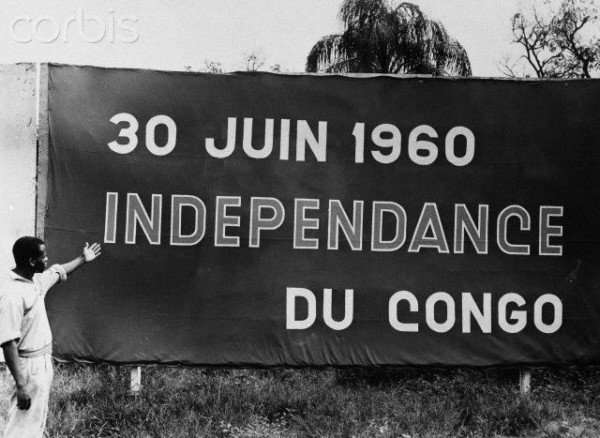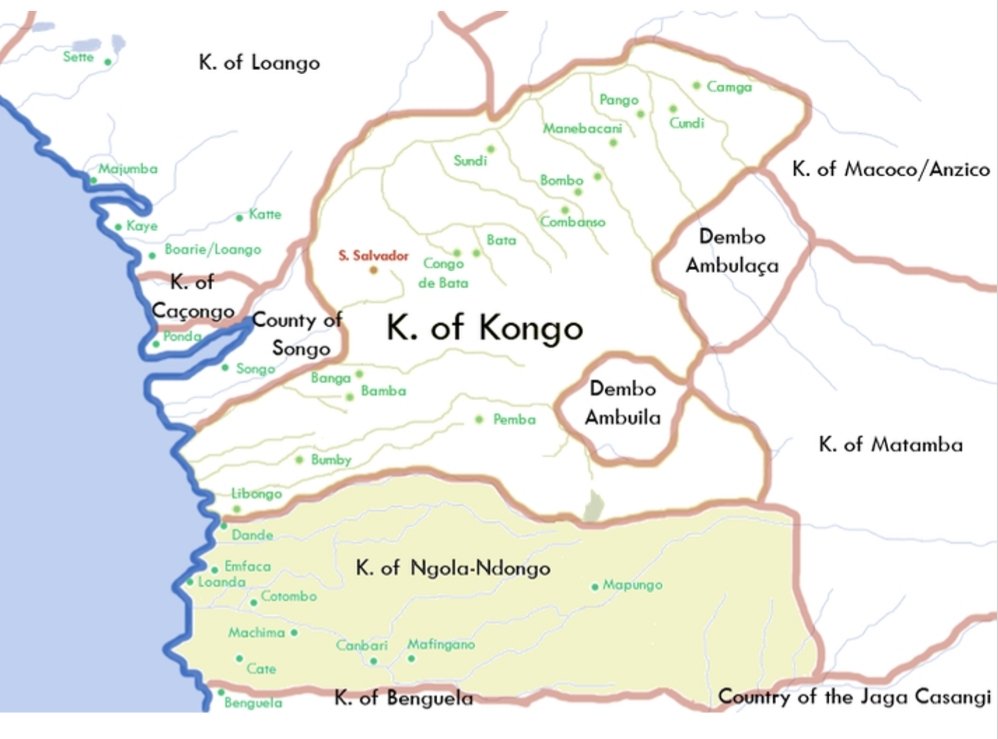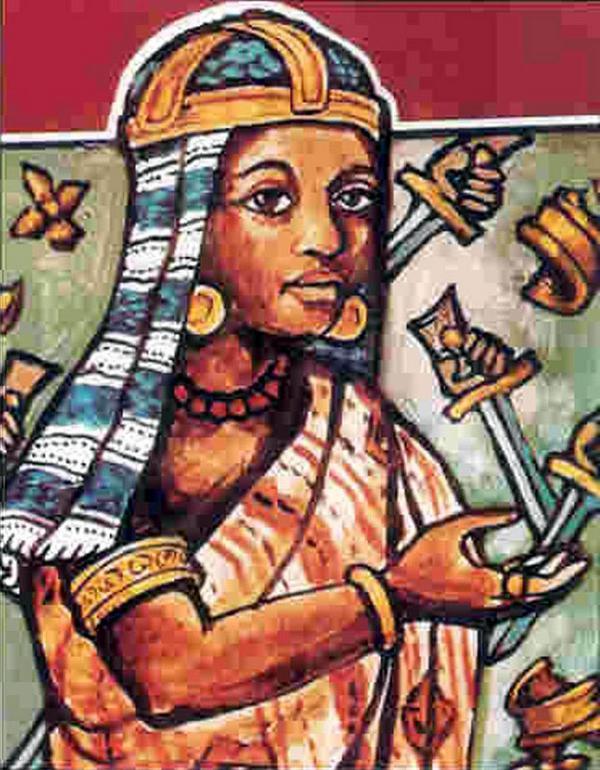Today is D.R. Congo independence day, so here's is a thread briefly looking at Congo's history from the precolonial era, through to independence. #Congo #DRC #mboka #independence
One of the earliest artefacts discovered in Congo's history is the Ishango bone. A mathematical tool, etched into an animal bone, discovered in the Ishango region of eastern Congo. The bone is believed to date back to circa 18’000-20’000BC.
The Kingdom of Kongo (Royaume du Kongo), circa 1500s, believed to be in its 13th dynasty at the time, had a population of 100’000 people in the capital city Mbanza-Kongo (London approx 50’000 at the time).
The kingdom had a complex
Structure of governance, led by the Mani Kongo (King), and was popular in iron (smelting), copper production and ivory. It is believed to comprise of the areas now known as (west) Congo, Rep. of Congo, Angola and (southern) Gabon.
Structure of governance, led by the Mani Kongo (King), and was popular in iron (smelting), copper production and ivory. It is believed to comprise of the areas now known as (west) Congo, Rep. of Congo, Angola and (southern) Gabon.
Don Alvaro, King of Kongo, receiving Dutch dignitaries in 1642. And Kongo-lese dignitaries of the the time.
During this time, the Kongo Kingdom was under threat of enslavement after the "discovery" (read: theft of people, land and resources) of Kongo by Diego Cao/Portugal in 1491, and later the Dutch, the British, etc.
Adding this tweet for some light humour, and for those who may not have got the reference. ttps://twitter.com/JJ_Bola/status/1144886759601385473?s=09
Queen Nzinga Kuwu, a powerful warrior queen, ruled the Kingdom of Kongo for decades until 1663. She fought on the front lines against and resisted the Portuguese slave trade. She created free towns in and around the Kingdom.
Note: Isn't she so incredibly gracious and beautiful?
Note: Isn't she so incredibly gracious and beautiful?
Kimpa Vita (aka Donna Beatrice) was a prophet of the Kongo Kingdom (1684-1706). She started a political/religious movement that resisted the Portuguese/European Slave trade.
She was believed to have spiritual ability - seeing visions/premonition etc - and prophesied that God is Black, as is Jesus, and his disciples, and key historical biblical figures were Black. She was burned alive by Portuguese authorities.
Circa 18th century, Portuguese/Capuchin missionaries forcibly converted locals to Catholicism/Christianity. Often, killing or burning down the temples/buildings of traditional healers/spiritualists (nganga-kisi)
At the Berlin Conference 1884-5 (1st pic), Leopold II claimed ownership of Congo, essentially leading to the colonised Belgian Congo state ruled by Leopold II.
Leopold II was responsible for the brutal deaths of 10-15 million Congolese people (exact number unknown) during his colonial rule. He forced the people to work on rubber plantations, and chopped the hands off those who did not produce enough.
Worth noting that Congolese people were treated as nothing more than chattel. They were stripped of their language, culture, names, religious and spiritual practise. This documentary, White King, Red Rubber, Black Death goes into more detail
Ota Benga (1883 – 1916) lived during this time and was from Mbuti people, also referred to as “pygmies”, of the Luba Kingdom, Congo.
Ota was captured by European traders (re:colonisers), and exhibited in The Human Zoo, New York. With the assistance of many, Benga was later freed, learned English and lived in the US. Then at the beginning of WWI, upon learning he could not return home, he took his own life.
Simon Kimbangu (right) (1887 – 1951) was a Congolese prophet, religious and spiritual leader (Kimbanguist Church), who resisted Belgian colonialism and prophesied that Congo(/Africa)will be independent and that the “West will become the East and the East will become the West.”
Kimbangu was imprisoned for 30 years by Belgian colonial authorities (this picture is taken in the prison).
Kimbangu preached about the importance of an African-centred identity for Black people, emphasising learning their cultures, languages and traditional beliefs.
Kimbangu preached about the importance of an African-centred identity for Black people, emphasising learning their cultures, languages and traditional beliefs.
During the colonial era, however, many Congolese were persecuted and even killed by European authorities for practicising their spiritual/traditional beliefs, which was labelled as evil or witchcraft (kindoki).
Belgian Congo, during colonialism circa 1950s. Congolese were treated as sub-citizens (in their own countries). Belgian colonisers created segregated towns, deny Congolese of education and basic necessities. However, many Congolese organised themselves and resisted oppression.
In 1960, Congo won independence from Belgium. There were many leaders - men and women - who fought for independence. Patrice Lumumba is often remembered as the "father of the indepedence" because of radical pan-African political centring and resistance against the colonisers.
This is the impromptu speech Lumumba gave on independence day, 30 June, 1960, after the disrespectful comments from the Belgian King.
LUMUMBA: This is the Lumumba film, released 1999, that explores the struggle for independence, the cullosion of European imperialists, Belgian, France, UK, USA etc, in the brutal assassination of Lumumba

 Read on Twitter
Read on Twitter


































